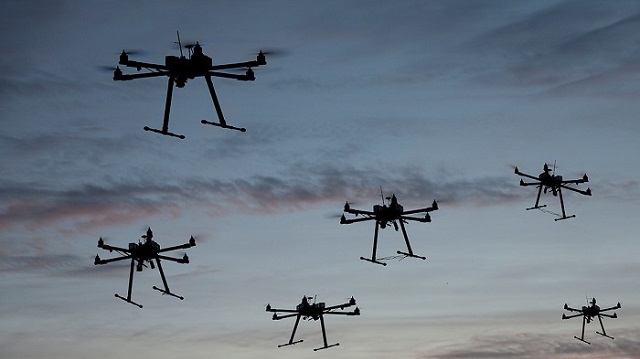Arizona State University engineering professor Panagiotis Artemiadis is working on a technology that will allow Air Force pilots to control entire fleets of drones using thought control.

The R&D project is operating under funds received from the Defense Advanced Research Project Agency. It’s being developed at Artemiadis’ Human-Oriented Robotics and Control Lab in the School for Engineering of Matter, Transport and Energy in the Ira A. Fulton Schools of Engineering.
“Ten or 20 years from now, instead of having big expensive aircraft or drones, you can have hundreds or thousands of inexpensive ones you deploy in an area,” Artemiadis said. “Even if you lose half of them, you can still achieve your goals.”
In order for it to work, the pilot must wear a cap equipped with 128 electrodes that detect brainwaves; specifically, they detect where thoughts originate in the brain and determining the pilot’s intended commands. These are generated by the pilot sitting in front of a monitor and thinking and picturing the drones performing specific tasks. From there, these directives are sent to the drones via Bluetooth.

“We have a motion-capture system that knows where the quads are, and we change their distance, and that’s it,” Artemiadis explained.
To date, one pilot has been able to control four drones inside a lab. The goal is to improve the technology to the point that the pilot can control a cluster of flying drones or earth-based vehicles to move in certain directions – whether it’s to spread out over a larger area, or circle around a specific target.
“It’s a matter of getting good signals with cheap and portable electrodes. Once you have this, you can definitely do this outdoors if you want,” Artemiadis said.
One thing Artemiadis pointed out is that whatever solution he does wind up rolling out, it’s not likely to fully replace the control panels and computers already in place. That’s because being able to control a robot with one’s mind requires a high level of concentration; something that is very difficult to achieve in a field of battle.
He added that there may be applications beyond warfare, including search and rescue operations, humanitarian aid distribution, and even package delivery.
To learn more, check out the video below:
Advertisement
Learn more about Electronic Products Magazine





